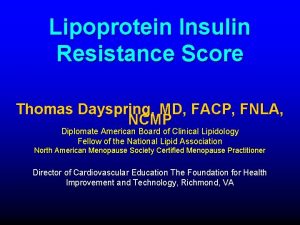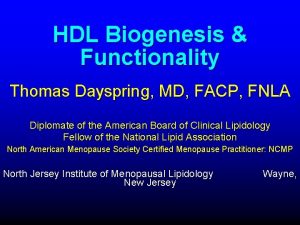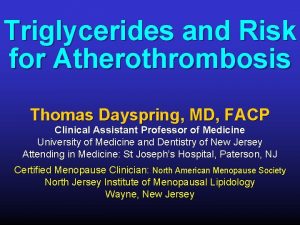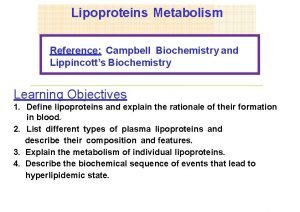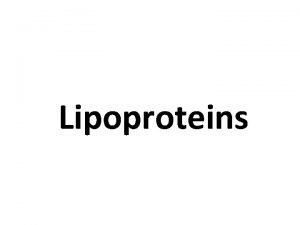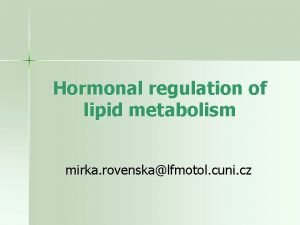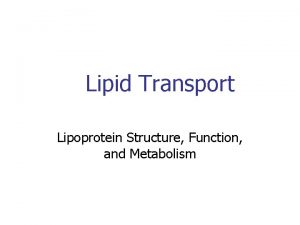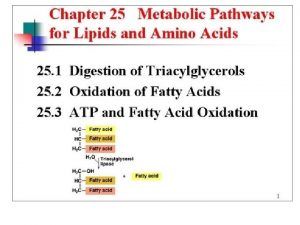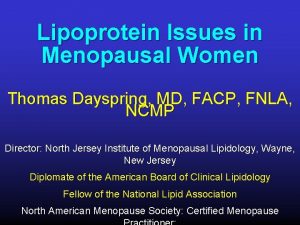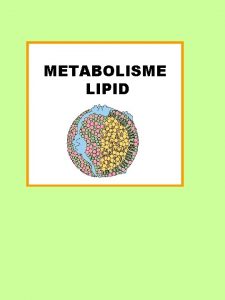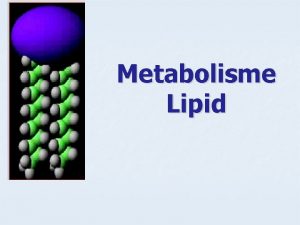Understanding Lipid and Lipoprotein Testing Thomas Dayspring MD







- Slides: 7

Understanding Lipid and Lipoprotein Testing Thomas Dayspring, MD, FACP, FNLA Director of Cardiovascular Education Foundation for Health Improvement and Technology Richmond, VA Diplomate of the American Board of Clinical Lipidology Certified Menopause Practitioner: North American Menopause Society Pre. Test

1 Pretest Questions TRUE OR FALSE? It is possible for patients to have very high LDL-cholesterol concentrations even if they have no LDL particles. Direct LDL-cholesterol assays are standardized and quite accurate. LDL-cholesterol and LDL particle number are highly correlated. It is not possible to have a low LDL-cholesterol in the face of a high non-HDL-C.

2 Pretest Questions Which of the following is false? (May be more than one correct answer) Although it is not a standardized assay, apolipoprotein B concentration is widely available in the US. Apolipoprotein B concentrations is the sum of the apolipoprotein B 100 and apolipoprotein B 48 particles. VLDL particle number contributes very little (5 -10%) to apolipoprotein B 100 concentrations. The major lipoprotein abnormality in patients with hypertriglyceridemia is elevated VLDL particle number.

3 Pretest Questions Are the statements which pertain to the following fasting lipid profile true or false? TC = 209 HDL-C = 37 LDL-C = 76 Glucose 123 (all in mg/d. L) TG = 480 It is extremely unlikely that this person is using lipid modulating drugs. The non-HDL-C is 133 mg/d. L Low HDL-C concentrations are always associated with low HDL particle concentrations It is a certainty that this person has excess numbers of small LDL particles

4 Pretest Questions Which of the following technologies can be used to produce accurate LDL particle numbers? 2 dimensional electrophoresis Ion mobility transfer Analytical Ultracentrifugation Vertical Auto Profile Gradient gel electrophoresis with immunofixation

5 Pretest Questions Which one of the following statements is false with respect to lipoprotein (a) assays? The most commonly used assay in the US is measurement of lipoprotein (a) mass. Lp(a) mass and Lp(a) particle concentrations can be very discordant in patients with high molecular weight isoforms of apoprotein (a). Lp(a)-cholesterol concentration is a surrogate of Lp(a) particle number concentration. The molecular weight of apoprotein (a) is highly dependent on the number on the makeup of Kringle V Lp(a)-cholesterol concentration is a determinant of LDL-cholesterol concentration.

Thank you for your attention FOUNDATION for HEALTH IMPROVEMENT AND TECHNOLOGY tdayspring@aol. com www. lecturepad. org http: //biomarkerbliki. org/
